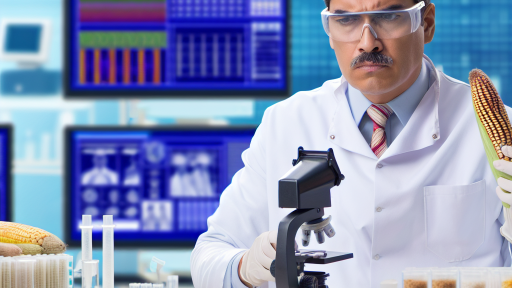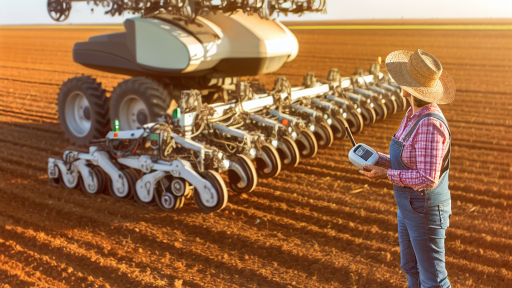Understanding Your Farming Needs
Identifying Your Primary Objectives
Begin by clarifying your primary goals for using farm management software.
Possible objectives include improving crop yields, reducing costs, or managing labor efficiently.
Consider what specific features will help achieve these objectives.
Assessing Current Operations
Take stock of your current farming operations to identify practical needs.
Make note of any inefficiencies or challenges that require solutions.
For instance, a challenge could be tracking inventory more effectively.
Determining the Scale of Your Operations
The scale of your farming operations influences software choices.
Small farms might need basic functionalities, while larger operations may require comprehensive tools.
Ensure the chosen software can scale with future growth.
Evaluating Technical Skills and Resources
Your team’s technical abilities will dictate the software’s complexity.
If your team lacks technical skills, opt for user-friendly software solutions.
Moreover, consider the availability of support and training resources.
Budget Considerations
Budget constraints can limit software options, so assess pricing structures carefully.
Look for software that offers a good balance between features and cost.
Some solutions may offer trial periods, allowing you to test usability before committing.
Transform Your Agribusiness
Unlock your farm's potential with expert advice tailored to your needs. Get actionable steps that drive real results.
Get StartedCompatibility with Existing Systems
Ensure the new software integrates seamlessly with your current systems.
Compatibility reduces disruptions and enhances data flow efficiency.
Check for software that supports data import/export capabilities.
Future Growth and Trends
Consider future growth plans and industry trends when choosing software.
Positioning yourself for adaptability will pay off in the long run.
Stay informed about technological advancements in the farming sector.
Types of Farm Management Software: An Overview
Understanding Farm Management Software
Farm management software streamlines agricultural operations.
It enhances decision-making and operational efficiency.
Users can manage crops, livestock, and resources effectively.
Different Categories of Farm Management Software
There are several types of farm management software available.
These packages cater to specific farming needs.
Choosing the right type is crucial for success.
Crop Management Software
Crop management software focuses on optimizing crop production.
It helps farmers plan planting schedules effectively.
This software often includes pest management tools.
Farmers can track crop growth and yield forecasts.
Livestock Management Software
This software supports animal husbandry and livestock tracking.
Farmers can manage breeding, feeding, and health records.
Furthermore, it assists in monitoring production metrics.
Financial Management Software
Financial management software aids in budgeting and accounting.
It provides tools for tracking income and expenses.
Farmers can generate financial reports quickly.
This helps in making informed financial decisions.
Precision Agriculture Software
Precision agriculture software uses technology for efficiency.
Showcase Your Farming Business
Publish your professional farming services profile on our blog for a one-time fee of $200 and reach a dedicated audience of farmers and agribusiness owners.
Publish Your ProfileIt incorporates data analytics and GPS mapping tools.
This software offers insights into field variability.
As a result, farmers can make data-driven decisions.
Integrated Farm Management Systems
Integrated systems combine various software types into one platform.
This allows for comprehensive management across all farm operations.
Farmers benefit from a centralized dashboard for monitoring.
Consequently, it enhances coordination and reduces errors.
Choosing the Right Software for Your Needs
Selecting the right software depends on specific requirements.
Farmers should assess their operational needs first.
Consider factors like scalability and user-friendliness.
Lastly, think about support and training offerings from vendors.
Assessing Features: What to Look For in Software
Core Functionality
Your chosen software should efficiently handle essential farming tasks.
Look for crop management, livestock tracking, and field mapping tools.
Additionally, it should integrate seamlessly with your existing practices.
User-Friendly Interface
An intuitive interface enhances user experience and reduces training time.
Avoid software that overwhelms users with complex navigation.
Ensure the design facilitates easy access to key features.
Customization Options
Every farm has unique needs, so customization matters.
Seek software that allows you to tailor features to your operation.
This flexibility can significantly improve efficiency.
Data Management Capabilities
Effective data management is critical for making informed decisions.
Choose software with robust data collection and reporting tools.
Clear visualizations help you easily analyze trends and performance.
Mobile Accessibility
Mobile compatibility allows you to manage your farm on the go.
Check if the software offers a dedicated mobile app or responsive design.
This feature enhances convenience and supports real-time decision-making.
Integration with Other Tools
Look for software that integrates with accounts and other farming systems.
This interoperability simplifies workflow and reduces duplication of efforts.
Seamless integration can elevate your farm’s overall productivity.
Customer Support and Training Resources
Reliable customer support is essential for ongoing success.
Assess the availability of training materials and guidance.
Good support saves you time and helps you maximize the software’s potential.
Cost and Value Assessment
Evaluate the software’s features against its cost.
Consider both initial investment and ongoing maintenance fees.
Ensure it delivers value that justifies the expense over time.
Scalability for Future Growth
Your farming operation may expand in the future.
Choose software that can grow alongside your business needs.
This foresight ensures continued effectiveness and adaptation to new challenges.
Discover More: Climate Change Mitigation Through Agricultural Biotechnology
Evaluating User Experience
Importance of Interface
A user-friendly interface is critical in farm management software.
Showcase Your Farming Business
Publish your professional farming services profile on our blog for a one-time fee of $200 and reach a dedicated audience of farmers and agribusiness owners.
Publish Your ProfileIt enhances efficiency and reduces the learning curve for users.
A well-designed interface improves overall user satisfaction.
Consequently, farmers can focus on their core tasks instead of software navigation.
Look for platforms that use clear menus and intuitive icons.
A responsive design can make a significant difference in usability.
Usability Considerations
Usability encompasses various factors that affect user interactions.
Consider the speed of the software and its responsiveness to commands.
Additionally, ensure that the software provides adequate support and documentation.
Hands-on trial experiences can reveal usability strengths and weaknesses.
Seek feedback from other farmers who have used the software.
Look for real-life testimonials that highlight usability aspects.
Streamlined Workflow
Farm management software should facilitate a streamlined workflow.
Integration with existing processes is essential for effective management.
Functionality like task notifications can greatly enhance productivity.
Moreover, features for scheduling and tracking can optimize operations.
Choose software that aligns with your daily farm routines and practices.
This alignment will minimize disruptions and increase overall efficiency.
Explore Further: Smart Farming: Leveraging IoT for Sustainable Agriculture
Budgeting for Farm Management Software: Costs and ROI
Understanding Software Costs
Farm management software often comes with varying price structures.
Factors influencing cost include features, user capacity, and support options.
Subscription models are common, requiring ongoing payments.
Some software offers one-time purchase options, though they may lack updates.
Be sure to evaluate your farm’s size and specific needs before deciding.
Types of Payment Models
Monthly subscriptions provide flexibility for farms with fluctuating needs.
Annual subscriptions can save money in the long run.
Pay-per-use models charge based on software utilization, which can be cost-effective.
Choose a model that fits your financial structure and operational demands.
Estimating Return on Investment
Calculate ROI to assess the true value of software investments.
Start by identifying expected efficiency improvements and cost savings.
Consider how the software impacts yield, labor, and resource management.
Collect data on current operational expenses to establish a baseline.
Project future savings and compare this to software costs.
Additional Costs to Consider
Training costs are essential to factor in when adopting new software.
Ensure staff feels comfortable using the program to maximize benefits.
Some software providers offer training as part of their package.
Others may charge separately for personalized training sessions.
Don’t forget to account for potential hardware upgrades if necessary.
Software Scalability and Longevity
Choose software that can grow with your farm’s needs.
Scalable solutions allow you to add features as your operation expands.
Consider the longevity of your software investment in your budget planning.
Showcase Your Farming Business
Publish your professional farming services profile on our blog for a one-time fee of $200 and reach a dedicated audience of farmers and agribusiness owners.
Publish Your ProfileRegular updates and support can extend the software’s effective life.
Research will help identify platforms that align with your future goals.
Explore Further: How Blockchain Enhances Traceability In Agricultural Supply Chains
Integration Capabilities
Importance of Integration
Integration capabilities are vital for effective farm management software.
They ensure seamless communication between different systems and operations.
This connectivity enhances overall productivity and decision-making processes.
Compatibility with Existing Systems
Your software should align with your current hardware and software setups.
Look for solutions that support popular farming technologies.
Check for compatibility with tools like GPS systems, accounting software, and inventory management.
APIs and Custom Integrations
Application Programming Interfaces (APIs) are crucial for customization.
They allow your farm management software to connect with third-party applications.
Ask vendors about the flexibility in integrating with your existing tools.
User Experience and Support
A user-friendly interface simplifies the integration process.
Evaluate the customer support offered by the software provider.
Responsive support can expedite troubleshooting during integration.
Future-Proofing Your Investment
Choose software that can adapt as technology evolves.
Consider platforms that regularly update features and integrations.
This ensures your software remains relevant as your operations grow.
Find Out More: Controlled Environment Agriculture Trends Every Farmer Should Know

Customer Support and Training: Ensuring Long-term Success
The Importance of Reliable Customer Support
Effective customer support is vital for farmers using management software.
It provides assistance for initial setup and troubleshooting.
Furthermore, responsive support enhances user confidence in the software.
Types of Support Offered
Look for companies that offer multiple support channels.
Common options include phone support, email assistance, and live chat.
Additionally, consider whether they provide on-site support when necessary.
Training Resources for Users
Training resources ensure users fully understand the software’s features.
Many companies offer online tutorials and webinars to guide users.
Moreover, written manuals can be invaluable for learning at your own pace.
Improving Team Efficiency
Proper training leads to improved team efficiency and productivity.
When staff can navigate the software easily, task completion speeds up.
Effective training contributes to a better return on investment.
Feedback and Continuous Improvement
Gathering user feedback is essential for refining customer support.
Companies should regularly assess user satisfaction levels.
Additionally, implementing user suggestions can improve overall service.
Final Considerations When Choosing Software
Ultimately, examine the quality of customer support and training offered.
This factor can greatly impact your software experience and success.
Investing in the right support will pay off in the long run.
Case Studies: Success Stories from Farmers Using Management Software
John’s Organic Farm
John implemented a farm management software to streamline his operations.
He successfully decreased input costs by 20% within the first season.
By tracking water usage, John optimized irrigation for his crops.
Showcase Your Farming Business
Publish your professional farming services profile on our blog for a one-time fee of $200 and reach a dedicated audience of farmers and agribusiness owners.
Publish Your ProfileMoreover, he reported increased yields due to better planning.
This software provided insights that empowered John’s decision-making.
Sunrise Dairy Farm
Sunrise Dairy adopted management software to monitor livestock health.
This upgrade improved overall herd productivity significantly.
Using data analytics, they identified optimal feeding strategies.
This resulted in higher milk production and lower feed costs.
Additionally, the software streamlined milk inventory management.
Green Valley Acres
Green Valley Acres chose management software to enhance crop rotation scheduling.
As a result, soil fertility improved, boosting overall crop health.
The farmers accessed real-time data on pests and diseases.
This led to timely interventions, reducing crop loss drastically.
Management software played a key role in their sustainable practices.
Harvest Farms
Harvest Farms integrated management software for better financial tracking.
This decision allowed them to allocate resources more effectively.
The software provided insights into budget predictions and expenses.
Consequently, they increased profit margins by focusing on lucrative crops.
Regular financial reports helped them make informed strategic decisions.
Mountain View Orchards
Mountain View Orchards started using software for customer relationship management.
This improved their marketing efforts and customer satisfaction.
They gathered feedback to better understand consumer preferences.
As a result, their sales grew by 30% year-over-year.
Management software helped them build lasting relationships with customers.
Future Trends in Farm Management Software: What to Expect
Integration of AI and Machine Learning
Farm management software will increasingly use artificial intelligence.
This technology will enhance decision-making capabilities for farmers.
Machine learning algorithms will optimize resource allocation efficiently.
Additionally, AI will help predict weather patterns and crop yields.
Cloud-Based Solutions
Cloud technology will offer flexible storage and data access options.
Farmers can manage operations from any location via the cloud.
This convenience will enhance collaboration among farm teams.
Moreover, cloud-based solutions typically have lower upfront costs.
Data-Driven Insights
Farm management software will provide deeper data analytics.
Farmers will access real-time insights into their operations.
These insights will facilitate timely and informed decisions.
Consequently, they can improve productivity and reduce waste.
Increased Focus on Sustainability
Future software will emphasize sustainable farming practices.
This focus includes tracking carbon footprints and resource efficiency.
Moreover, it will aid in compliance with environmental regulations.
Sustainability features will appeal to eco-conscious consumers.
Enhanced Mobile Functionality
Mobile applications will become essential for farm management.
Farmers will monitor operations on-the-go with ease.
Showcase Your Farming Business
Publish your professional farming services profile on our blog for a one-time fee of $200 and reach a dedicated audience of farmers and agribusiness owners.
Publish Your ProfileMobile tools will facilitate quick access to vital information.
They will improve communication within farming teams significantly.
Customization and Flexibility
Future software will offer greater customization options for users.
Farmers can tailor features according to their unique needs.
Flexibility will enhance user experience and satisfaction.
This adaptability will cater to various types of farming operations.
Integration with IoT Devices
The Internet of Things will transform farm management practices.
IoT devices will provide real-time monitoring of equipment and crops.
This integration will streamline operations and reduce downtime.
Additionally, it will enhance data collection for informed decision-making.
Reviewing Software Providers
Importance of Comparing Ratings
Comparing ratings helps you make informed decisions.
These ratings reflect user satisfaction and software quality.
Reliable platforms provide aggregated ratings from multiple sources.
Consider checking rating sites such as G2 and Capterra.
These websites offer detailed insights into user experiences.
Finding User Testimonials
User testimonials give valuable perspectives on software performance.
Read testimonials on the software provider’s website.
Look for feedback on usability and customer support.
Additionally, check user forums for unbiased opinions.
Many users share their experiences on social media platforms.
Evaluating Rankings from Independent Sources
Independent reviews can provide an objective viewpoint.
Check industry-specific publications for software rankings.
These publications often conduct thorough evaluations.
They compare features, benefits, and drawbacks of each software.
Look for articles from reputable agricultural technology blogs.
Selecting the Right Software Providers
Choose providers with high ratings and positive testimonials.
Avoid those with numerous complaints or negative reviews.
Ensure the software fits your farming needs and preferences.
Discuss with colleagues to gauge their experiences.
Networking among farmers can yield valuable recommendations.
Additional Resources
Nutrient Management | Natural Resources Conservation Service




